Introduction to Smooth Manifolds
Preface
Prerequisites
Exercises and Problems
About the Second Edition
Acknowledgments
Contents
Chapter 1: Smooth Manifolds
Topological Manifolds
Coordinate Charts
Examples of Topological Manifolds
Topological Properties of Manifolds
Connectivity
Local Compactness and Paracompactness
Fundamental Groups of Manifolds
Smooth Structures
Local Coordinate Representations
Examples of Smooth Manifolds
The Einstein Summation Convention
More Examples
Manifolds with Boundary
Smooth Structures on Manifolds with Boundary
Problems
Chapter 2: Smooth Maps
Smooth Functions and Smooth Maps
Smooth Functions on Manifolds
Smooth Maps Between Manifolds
Diffeomorphisms
Partitions of Unity
Applications of Partitions of Unity
Problems
Chapter 3: Tangent Vectors
Tangent Vectors
Geometric Tangent Vectors
Tangent Vectors on Manifolds
The Differential of a Smooth Map
Computations in Coordinates
The Differential in Coordinates
Change of Coordinates
The Tangent Bundle
Velocity Vectors of Curves
Alternative Definitions of the Tangent Space
Tangent Vectors as Derivations of the Space of Germs
Tangent Vectors as Equivalence Classes of Curves
Tangent Vectors as Equivalence Classes of n-Tuples
Categories and Functors
Problems
Chapter 4: Submersions, Immersions, and Embeddings
Maps of Constant Rank
Local Diffeomorphisms
The Rank Theorem
The Rank Theorem for Manifolds with Boundary
Embeddings
Submersions
Smooth Covering Maps
Problems
Chapter 5: Submanifolds
Embedded Submanifolds
Slice Charts for Embedded Submanifolds
Level Sets
Immersed Submanifolds
Restricting Maps to Submanifolds
Uniqueness of Smooth Structures on Submanifolds
Extending Functions from Submanifolds
The Tangent Space to a Submanifold
Submanifolds with Boundary
Problems
Chapter 6: Sard's Theorem
Sets of Measure Zero
Sard's Theorem
The Whitney Embedding Theorem
The Whitney Approximation Theorems
Tubular Neighborhoods
Smooth Approximation of Maps Between Manifolds
Transversality
Problems
Chapter 7: Lie Groups
Basic Definitions
Lie Group Homomorphisms
The Universal Covering Group
Lie Subgroups
Group Actions and Equivariant Maps
Equivariant Maps
Semidirect Products
Representations
Problems
Chapter 8: Vector Fields
Vector Fields on Manifolds
Local and Global Frames
Vector Fields as Derivations of Cinfty(M)
Vector Fields and Smooth Maps
Vector Fields and Submanifolds
Lie Brackets
The Lie Algebra of a Lie Group
Induced Lie Algebra Homomorphisms
The Lie Algebra of a Lie Subgroup
Problems
Chapter 9: Integral Curves and Flows
Integral Curves
Flows
The Fundamental Theorem on Flows
Complete Vector Fields
Flowouts
Regular Points and Singular Points
Flows and Flowouts on Manifolds with Boundary
Lie Derivatives
Commuting Vector Fields
Commuting Frames
Time-Dependent Vector Fields
First-Order Partial Differential Equations
Linear Equations
Quasilinear Equations
Problems
Chapter 10: Vector Bundles
Vector Bundles
Local and Global Sections of Vector Bundles
Local and Global Frames
Bundle Homomorphisms
Subbundles
Fiber Bundles
Problems
Chapter 11: The Cotangent Bundle
Covectors
Tangent Covectors on Manifolds
Covector Fields
Coframes
The Differential of a Function
Pullbacks of Covector Fields
Restricting Covector Fields to Submanifolds
Line Integrals
Conservative Covector Fields
Problems
Chapter 12: Tensors
Multilinear Algebra
Abstract Tensor Products of Vector Spaces
Covariant and Contravariant Tensors on a Vector Space
Symmetric and Alternating Tensors
Symmetric Tensors
Alternating Tensors
Tensors and Tensor Fields on Manifolds
Pullbacks of Tensor Fields
Lie Derivatives of Tensor Fields
Problems
Chapter 13: Riemannian Metrics
Riemannian Manifolds
Pullback Metrics
Riemannian Submanifolds
The Normal Bundle
The Riemannian Distance Function
The Tangent-Cotangent Isomorphism
Pseudo-Riemannian Metrics
Problems
Chapter 14: Differential Forms
The Algebra of Alternating Tensors
Elementary Alternating Tensors
The Wedge Product
Interior Multiplication
Differential Forms on Manifolds
Exterior Derivatives
Exterior Derivatives and Vector Calculus in R3
An Invariant Formula for the Exterior Derivative
Lie Derivatives of Differential Forms
Problems
Chapter 15: Orientations
Orientations of Vector Spaces
Orientations of Manifolds
Orientations of Hypersurfaces
Boundary Orientations
The Riemannian Volume Form
Hypersurfaces in Riemannian Manifolds
Orientations and Covering Maps
The Orientation Covering
Problems
Chapter 16: Integration on Manifolds
The Geometry of Volume Measurement
Integration of Differential Forms
Integration on Manifolds
Integration on Lie Groups
Stokes's Theorem
Manifolds with Corners
Integration on Riemannian Manifolds
Integration of Functions on Riemannian Manifolds
The Divergence Theorem
Surface Integrals
Densities
The Riemannian Density
Problems
Chapter 17: De Rham Cohomology
The de Rham Cohomology Groups
Elementary Computations
Homotopy Invariance
Computations Using Homotopy Invariance
The Mayer-Vietoris Theorem
Computations Using the Mayer-Vietoris Theorem
Degree Theory
Proof of the Mayer-Vietoris Theorem
Problems
Chapter 18: The de Rham Theorem
Singular Homology
Singular Cohomology
Smooth Singular Homology
The de Rham Theorem
Problems
Chapter 19: Distributions and Foliations
Distributions and Involutivity
Integral Manifolds and Involutivity
Involutivity and Differential Forms
The Frobenius Theorem
Foliations
Lie Subalgebras and Lie Subgroups
Overdetermined Systems of Partial Differential Equations
Problems
Chapter 20: The Exponential Map
One-Parameter Subgroups and the Exponential Map
One-Parameter Subgroups
The Exponential Map
The Closed Subgroup Theorem
Infinitesimal Generators of Group Actions
Left Actions
The Lie Correspondence
Lie's Fundamental Theorems
Normal Subgroups
The Adjoint Representation
Ideals and Normal Subgroups
Problems
Chapter 21: Quotient Manifolds
Quotients of Manifolds by Group Actions
The Quotient Manifold Theorem
Covering Manifolds
Homogeneous Spaces
Sets with Transitive Group Actions
Applications to Lie Theory
Quotient Groups
Connectivity of Lie Groups
Problems
Chapter 22: Symplectic Manifolds
Symplectic Tensors
Symplectic Structures on Manifolds
The Canonical Symplectic Form on the Cotangent Bundle
The Darboux Theorem
Hamiltonian Vector Fields
Poisson Brackets
Hamiltonian Flowouts
Contact Structures
Nonlinear First-Order PDEs
General Nonlinear Equations
Problems
Appendix A: Review of Topology
Topological Spaces
Hausdorff Spaces
Bases and Countability
Subspaces, Products, Disjoint Unions, and Quotients
Subspaces
Product Spaces
Disjoint Union Spaces
Quotient Spaces and Quotient Maps
Open and Closed Maps
Connectedness and Compactness
Locally Compact Hausdorff Spaces
Homotopy and the Fundamental Group
Covering Maps
Appendix B: Review of Linear Algebra
Vector Spaces
Bases and Dimension
Linear Maps
Change of Basis
The Determinant
Inner Products and Norms
Norms
Direct Products and Direct Sums
Appendix C: Review of Calculus
Total and Partial Derivatives
Partial Derivatives
Multiple Integrals
Integrals of Vector-Valued Functions
Sequences and Series of Functions
The Inverse and Implicit Function Theorems
Appendix D: Review of Differential Equations
Existence, Uniqueness, and Smoothness
Nonautonomous Systems
Simple Solution Techniques
Separable Equations
2x2 Constant-Coefficient Linear Systems
Partially Uncoupled Systems
References
Notation Index
Subject Index
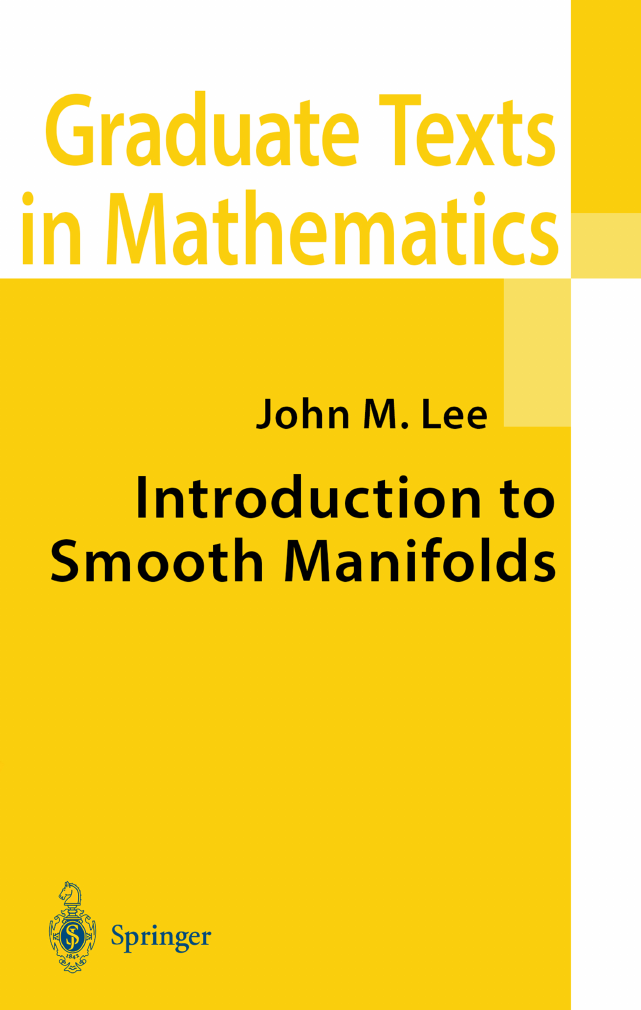
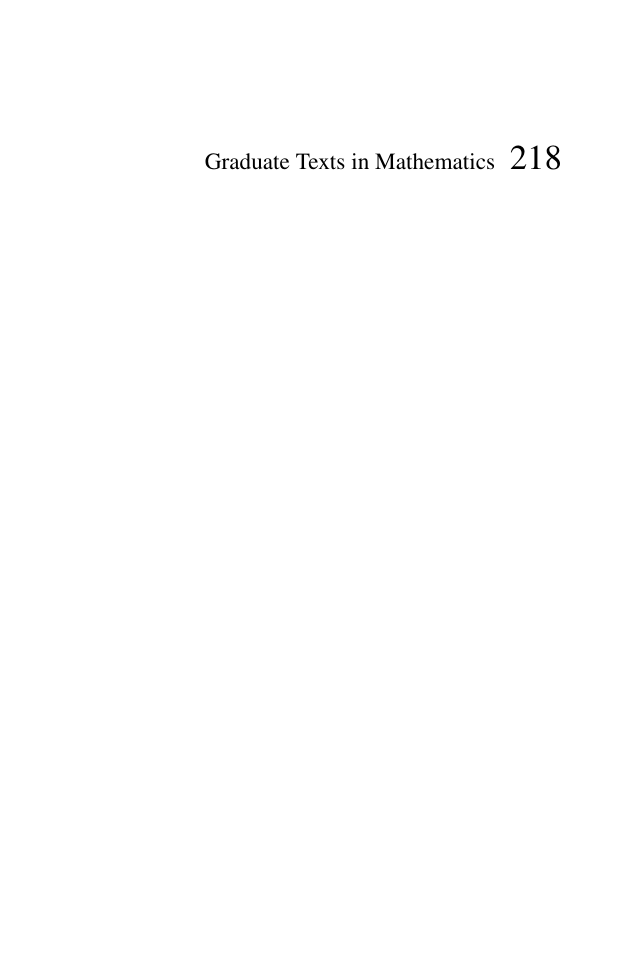
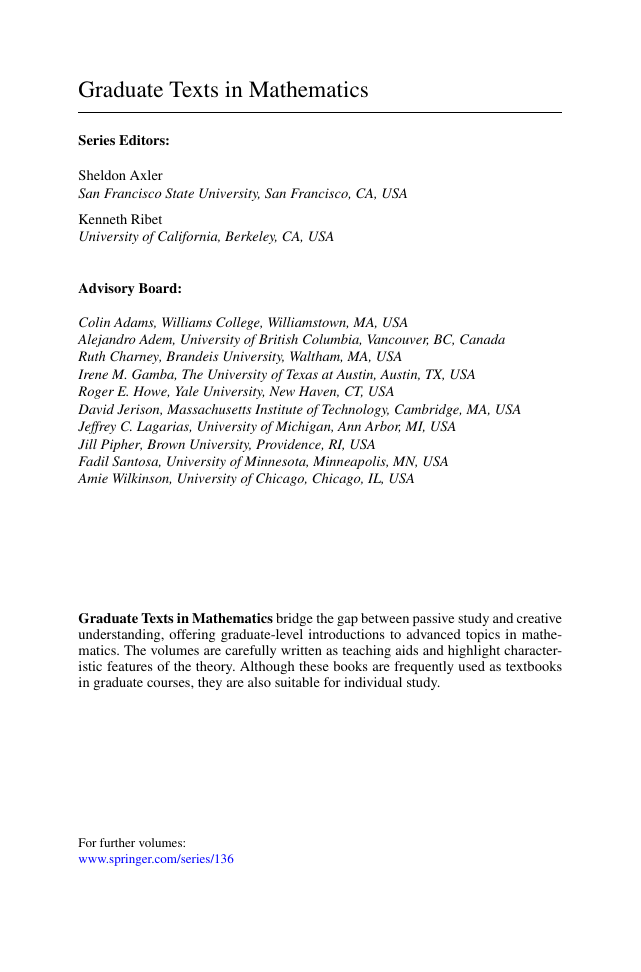
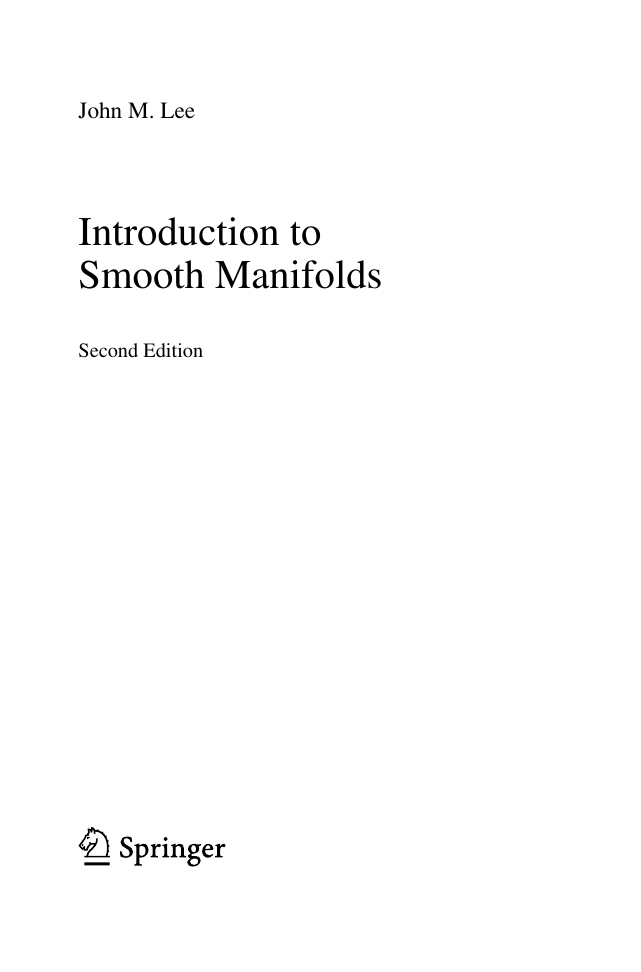

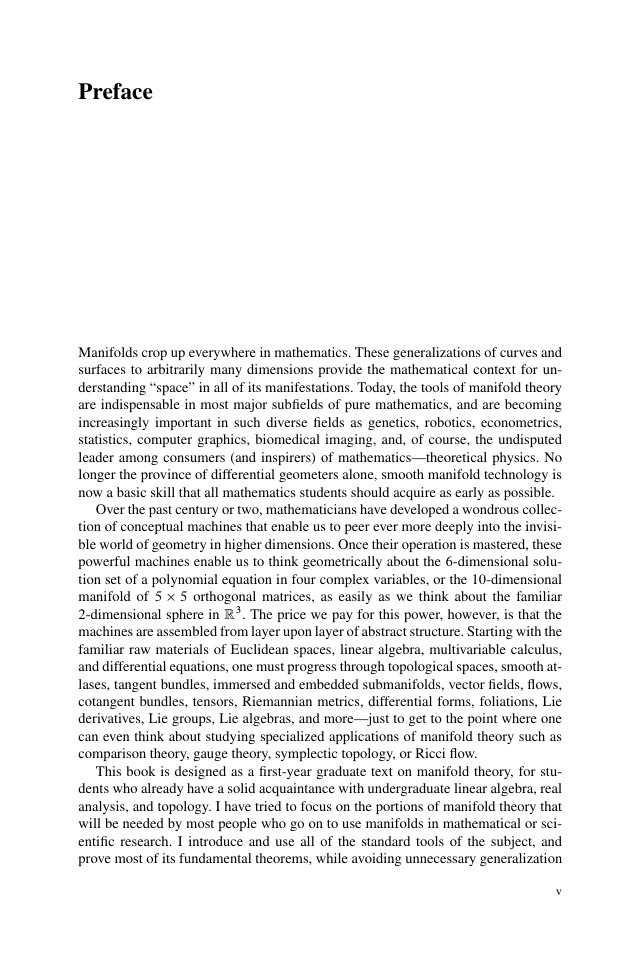
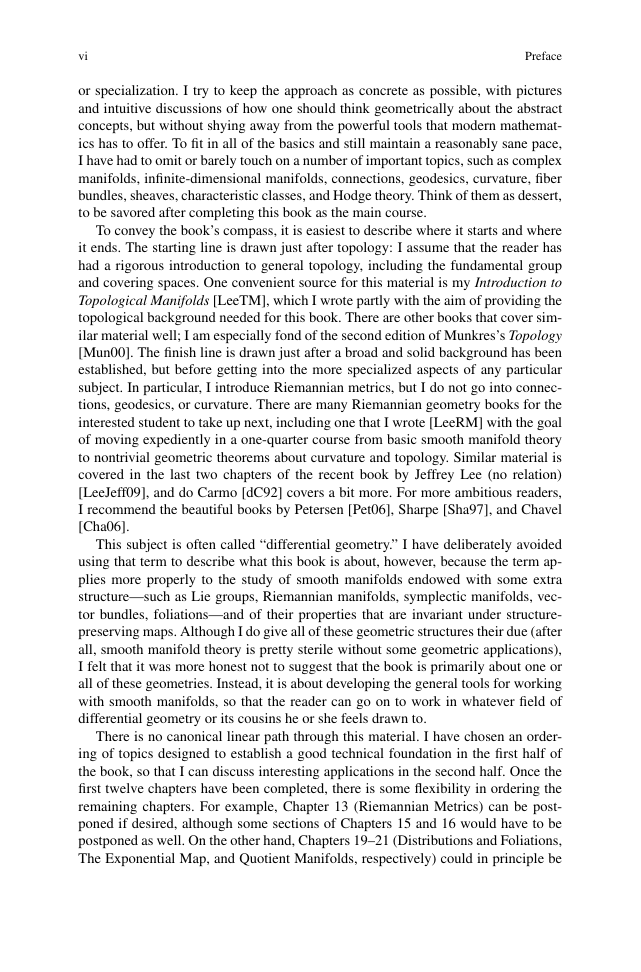
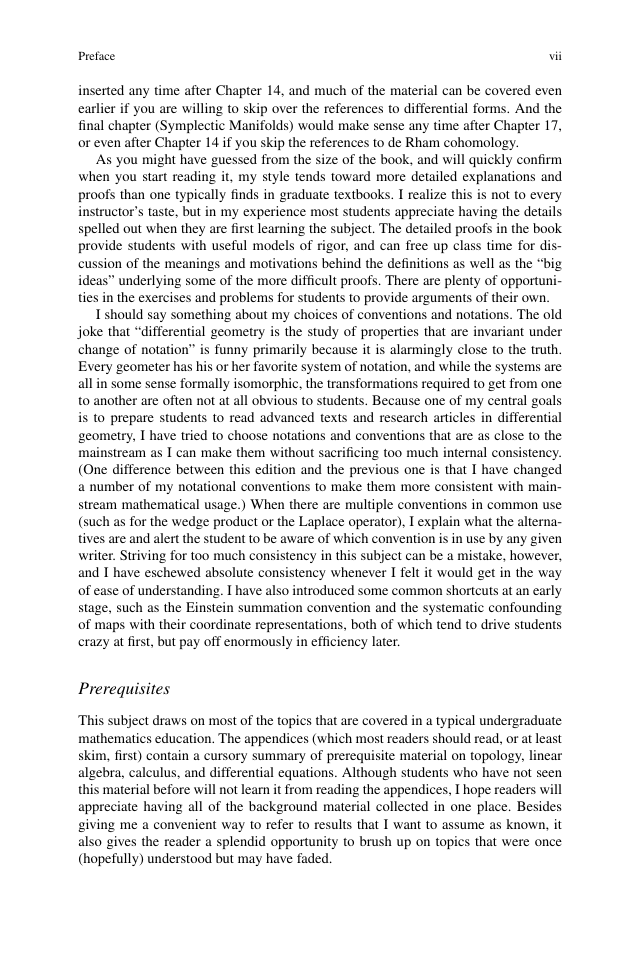








 2023年江西萍乡中考道德与法治真题及答案.doc
2023年江西萍乡中考道德与法治真题及答案.doc 2012年重庆南川中考生物真题及答案.doc
2012年重庆南川中考生物真题及答案.doc 2013年江西师范大学地理学综合及文艺理论基础考研真题.doc
2013年江西师范大学地理学综合及文艺理论基础考研真题.doc 2020年四川甘孜小升初语文真题及答案I卷.doc
2020年四川甘孜小升初语文真题及答案I卷.doc 2020年注册岩土工程师专业基础考试真题及答案.doc
2020年注册岩土工程师专业基础考试真题及答案.doc 2023-2024学年福建省厦门市九年级上学期数学月考试题及答案.doc
2023-2024学年福建省厦门市九年级上学期数学月考试题及答案.doc 2021-2022学年辽宁省沈阳市大东区九年级上学期语文期末试题及答案.doc
2021-2022学年辽宁省沈阳市大东区九年级上学期语文期末试题及答案.doc 2022-2023学年北京东城区初三第一学期物理期末试卷及答案.doc
2022-2023学年北京东城区初三第一学期物理期末试卷及答案.doc 2018上半年江西教师资格初中地理学科知识与教学能力真题及答案.doc
2018上半年江西教师资格初中地理学科知识与教学能力真题及答案.doc 2012年河北国家公务员申论考试真题及答案-省级.doc
2012年河北国家公务员申论考试真题及答案-省级.doc 2020-2021学年江苏省扬州市江都区邵樊片九年级上学期数学第一次质量检测试题及答案.doc
2020-2021学年江苏省扬州市江都区邵樊片九年级上学期数学第一次质量检测试题及答案.doc 2022下半年黑龙江教师资格证中学综合素质真题及答案.doc
2022下半年黑龙江教师资格证中学综合素质真题及答案.doc